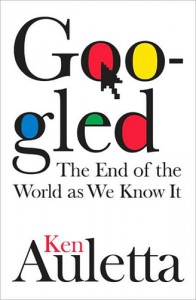
By Sven Larsen (@zemoga.com)
You’ve come up with a brilliant strategy. One that covers all the bases and guarantees success if it’s properly implemented. Now you’ve got just one problem. How to you get your team to execute?
That’s the subject of Daniel Pink‘s new book, DRIVE, the Surprising Truth About What Motivates Us. This is the fourth book from Pink, who’s previous volumes (including FREE AGENT NATION and A WHOLE NEW MIND) have long been favorites around the Zemoga offices. In this latest volume, Pink posits that there are two types of motivation, “Type X” (extrinsic) and “Type I” (intrinsic) and the author argues that too much of our society has been built on Type X practices. As in A WHOLE NEW MIND, Pink believes that times have changed and the old Type X motivational models no longer work. As automation, outsourcing, and affluence have risen, people are no longer motivated by external rewards like big salaries or fancy offices. Instead they need to feel that they are doing meaningful work, that they are somehow accomplishing some purpose in their life.
While Pink’s theories are intriguing, too much of the book reads like an extension of the (highly superior) A WHOLE NEW MIND. Pink has merely substituted Types X and I for the left brain vs. right brain arguments of the previous title. Much of the work also reads as a restating/rewriting of the work of psychologists Edward Deci and Richard Ryan (Pink refers to them constantly throughout the book). He does make the book extremely useful for managers, however, with descriptions of lots of exercises and a handy guide for when to use extrinsic rewards to accomplish a task. However, the book is padded out with a bibliography, recap and discussion guide that would seem more at home on the author’s website than included here.
DRIVE is a good introduction to Pink for those who have never read him before or are looking for a quick, business focused approach to the science of motivational psychology. And it will provide the answers to the troublesome question I posed in the first paragraph of this post. I only wish that Pink himself had been a little more motivated when he created this book?
What do you think? Have you read DRIVE yet?









